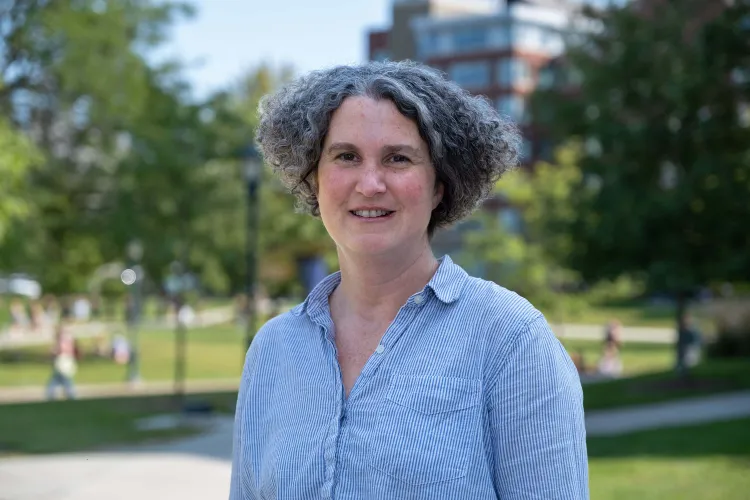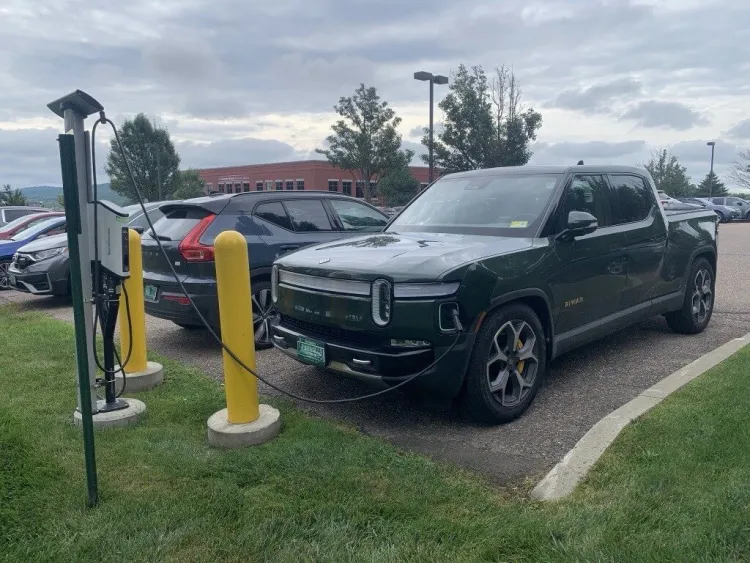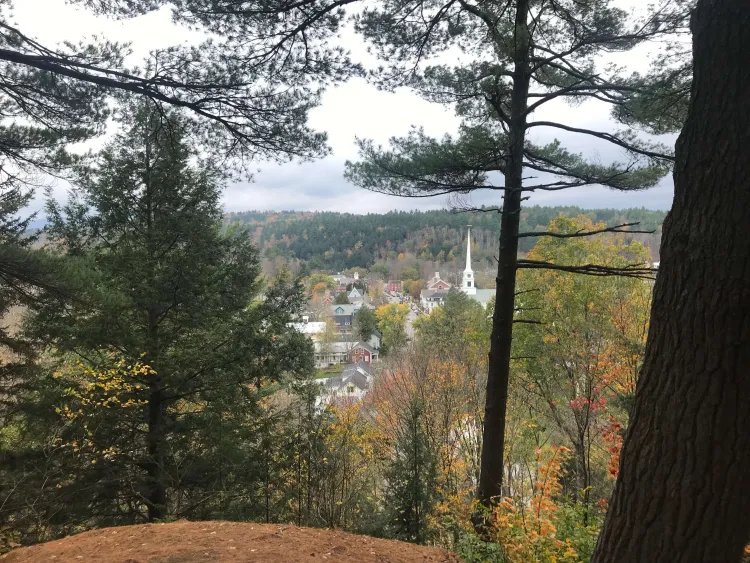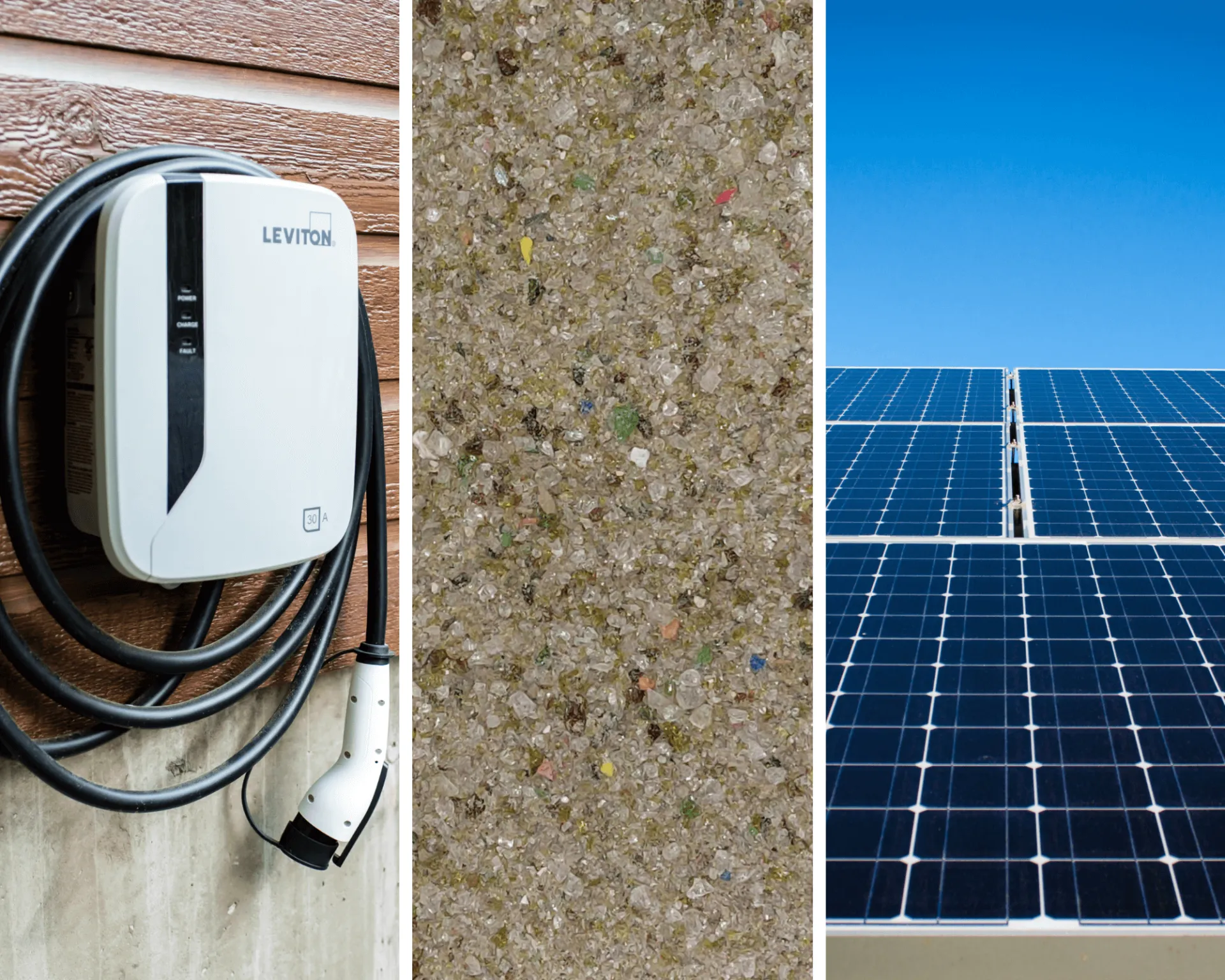The flood of 1927. Tropical Storm Irene. Historic flooding in 2023 and 2024. Vermonters are no strangers to extreme weather and the ways climate change is exacerbating the impacts of natural disasters. But when the worst happens, Vermonters don’t see strangers—they see neighbors who need help.
As Vermont’s land-grant university, the University of Vermont, too, aims to serve the people of the Green Mountain State. From agriculture to zoology, the research that happens here helps keep Vermont’s woods and waters clean, Vermont farms productive, and our communities safer and healthier.
This summer, we’re sharing research from UVM’s Gund Institute for Environment and Water Resources Institute that improves lives and livelihoods in Vermont every day. Today, we’re highlighting three research projects that are improving the Green Mountain State’s energy and transportation sectors.
Exploring the effects of EV incentives
Transportation accounts for the largest share of Vermont’s greenhouse gas emissions. That’s why, in recent years, lawmakers have poured millions of dollars into incentivizing residents to ditch their gas-powered vehicles and go electric. But do those incentives work?
That’s a question Dana Rowangould, an assistant professor in the Department of Civil and Environmental Engineering and an affiliate at the Gund Institute, is helping officials at the Vermont Agency of Transportation answer through a research grant paid for with federal and state funds.
“Vermont is obviously very motivated to reduce our greenhouse gas emissions from transportation, and the state is taking lots of action to do so,” she said. “But we don't have the same kind of research and knowledge base to build those policies that bigger states, like California, have.”

Relying on research from bigger, urban places may not be transferable to a rural state like Vermont. Vermonters often drive longer distances, charging infrastructure is limited in some parts of the state, and cold winter temperatures cut the range EVs can travel between charges.
For years, researchers at UVM’s Transportation Research Center have worked to fill the knowledge gap. Using a spatially detailed dataset that includes all vehicles registered in Vermont and the miles they travel annually, Rowangould is analyzing what actually happens when drivers receive EV incentives.
For example, previous research has shown some drivers drive more miles overall when they switch to a more efficient vehicle, especially in rural parts of Vermont. Getting an EV might cause similar changes as people pay less for gas and feel less guilty about driving. For some households, an EV might be a third vehicle, rather than replacing the primary gas-powered car.

“We don't really know the outcome of the incentives in terms of the net effect on a household,” Rowangould said. “This unique data set we have can provide a lot more nuanced information to the state about how these policies affect greenhouse gas emissions here.”
She said the results will be shared with the Vermont Agency of Transportation, which has carried out the state’s clean vehicle incentive program. They also advise policymakers in Montpelier on future funding priorities.
A second life for Vermont’s glass
In Vermont, state law requires that glass is recycled, but what happens after you rinse out that glass jar and toss it into the blue recycling bin?
“So as a responsible citizen, we put our glass in recycling right, and we hope that—we assume that—it's going to get recycled,” said Mandar Dewoolkar, a professor and Chair of Civil and Environmental Engineering at UVM. “But actually, to reuse glass as new glass is challenging—most glass recycled in Vermont is not converted to a new glass container.”
In Vermont’s most populous county the municipal waste processor, the Chittenden Solid Waste District (CSWD), has invested in machinery that crushes glass into smaller pieces.
Crushed glass can be used in a variety of ways—in construction, water filtration systems and landscaping. It can replace sand or silica, the material used to make glass, which is a finite natural resource that is rapidly depleting.
Currently, most of the recycled glass is being sent out of state, which costs the recycler money. But the state has expressed interest in using crushed glass, especially as a road construction material. Like with many recycled waste streams, recycled glass sometimes contains other materials—bits of plastic, paper and metal that could compromise its performance.

Using funding from the U.S. Department of Transportation, Dewoolkar, UVM Assistant Professor Matthew Scarborough, and their students developed a method to determine what percentage of the crushed glass is other, unwanted materials, also called deleterious materials. The research team worked closely with CSWD, the Vermont Agency of Transportation (VTrans) and the Vermont Agency of Natural Resources.
“We came up with methods that require using a magnet on this material and then burning it at 550 degrees Centigrade in order to come up with total deleterious material content,” said Scarborough, who teaches in the Department of Civil and Environmental Engineering. Both Dewoolkar and Scarborough are also Gund Fellows and researchers at the Water Resources Institute.
Their method was so effective the researchers are working on getting it adopted on a national level.
During the second phase of the project, the team determined through an extensive set of experiments how much deleterious material could safely be in crushed glass without compromising its engineering integrity. The idea is to give state agencies, like VTrans, confidence in using recycled glass in road construction.
In the last phase of the study, which is finishing this fall, the research team is analyzing the economic and environmental impacts of using more crushed glass in Vermont.
Preliminarily, the team has found that even if a recycling facility in Vermont were to give crushed glass away for free, they’d still save money and greenhouse gas emissions by not having to ship it out of state. Using the material also reduces the need for the state to buy sand, which has become expensive in recent years.
“We will not only save natural materials, but we will reduce things that go into landfills,” Dewoolkar said. “So, for the average Vermonter whose hope is that when they recycled the glass, it actually found a new purpose, this is the way to find a new purpose whilst even saving money and having significant environmental benefits.”
Helping towns with renewable energy
Picture this: Your local selectboard is considering offering cash incentives to encourage people to switch to heat pumps or to weatherize their homes. Or your town wants to replace its municipal gas vehicle fleet with EVs.
These are the kinds of scenarios many town energy and planning boards across Vermont are asked to consider. And they can have a variety of impacts—from reducing greenhouse gas emissions to creating local jobs to causing changes to electricity costs and the reliability of the grid.
“Sometimes the benefits are obvious, like installing a heat pump heats your house,” said Jeffrey Marshall, a professor in UVM’s Department of Mechanical Engineering and a fellow with the Gund Institute and the Water Resources Institute. “But sometimes there’s things that aren’t so obvious, like the heat pump takes electricity which might contribute to a power outage.”
With support from the U.S. Department of Energy, a team of faculty, students and postdocs from UVM’s College of Engineering and Mathematical Sciences and the Rubenstein School of Environment and Natural Resources are working with four Vermont utility companies and three national laboratories to develop software that would allow town energy planning committees to model the impacts of different scenarios.
Researchers are working closely with town energy boards in three Vermont communities—Stowe, Glover, and Rochester—to address the most pressing concerns for town planners. As the project final year of funding, the researchers will work with these town energy boards to test their software and identify ways it can be improved.

The project comes at a time when energy generation is becoming increasingly decentralized, with rapid spread of renewable but intermittent sources of electricity, such as rooftop solar and wind power. These changes have a major impact on the power grid, both structurally and operationally.
“We want to look at all the impacts, good and bad,” Marshall said. “This modeling will allow towns to see the impact of possible investments before they make them.”
With continued federal support, the researchers hope to make this software available for communities across Vermont and the country and expand its use for other fuels, like natural gas.
